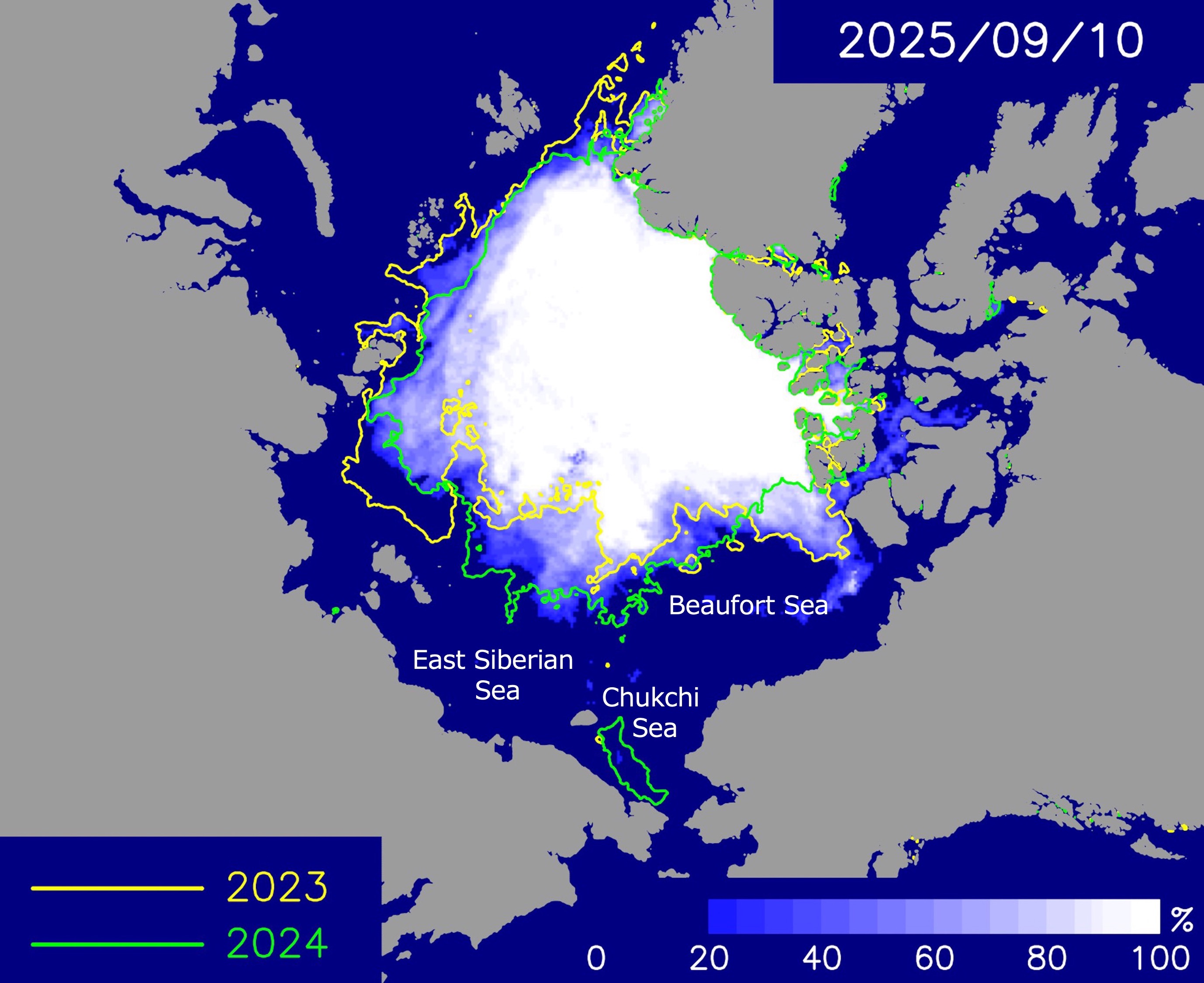2025 Second report
Noriaki KIMURA (Atmosphere and Ocean Research Institute, The University of Tokyo) , Arctic Sea Ice Information Center

- The Arctic sea-ice extent is expected to shrink to 4.44 million square kilometers in mid September.
- The Northern Sea Route along the Russian coast is likely to open in late August, and the route along the Canadian coast (excluding the archipelago) is expected to open in late July.




The Arctic sea-ice extent is projected to decrease to around 4.44 million square kilometers at its annual minimum on September 11. This value is slightly larger than the minimums observed in 2023 and 2024.
Along the Russian coast, the Northern Sea Route is expected to open in late August. On the Canadian side, excluding the archipelago, the sea ice is projected to retreat from the coast by late July, allowing navigation.
In recent years, sea ice has tended to remain in summer in the Pacific-side regions of the Beaufort Sea, Chukchi Sea, and East Siberian Sea. Last year, even at the seasonal minimum in September, a large amount of sea ice remained unmelted on the Russian side of the Chukchi Sea. This is thought to be due to the presence of very thick ice in that area. In general, sea ice becomes thicker for two reasons: one is through thermodynamic growth, and the other is through mechanical deformation when ice floes are compressed and piled up. As an indicator of how easily the ice deforms, Figure 5 shows the accumulation of sea ice shear over the five-month period from January to May in both last year and this year. In 2024, high shear values were seen in the Chukchi Sea, indicating that the ice in this region experienced strong deformation. This year, there is again a possibility that sea ice will remain in the East Siberian Sea and on the Russian side of the Chukchi Sea until late August or early September. However, since the shear is smaller than last year, it is not expected that as much ice will remain as it did in 2024.
The sea-ice distribution in this forecast is calculated based on ice thickness at the end of May. We analyzed observational data from 2007 to 2024, focusing on the relationship between sea-ice thickness on May 31 and sea-ice concentration (the fraction of ocean covered by ice) from July onward. Our analysis shows that areas with thicker ice at the end of May tend to retain more sea ice during the summer. Using this relationship, we predicted the sea-ice concentration from July 1 onward, based on the observed ice thickness on May 31, 2025.
The ice thickness used in the prediction were derived from data by the satellite-borne microwave radiometers AMSR-E and AMSR2.The ice thickness data will soon be made available via the Arctic Data archive System (ADS) of the National Institute of Polar Research.
You can also check the daily forecast and sea ice age data (daily and yearly) on Arctic Data archive System (ADS) at National Institute of Polar Research.
If you have any questions about satellite monitoring of the Arctic Ocean, sea ice forecasting, or the forecasting methods used here, please contact the Arctic Sea Ice Information Center (
).
The sea ice forecast and its basic research were started in GRENE, continued to ArCS Project, and has been conducted in ArCS II Project since 2020.


